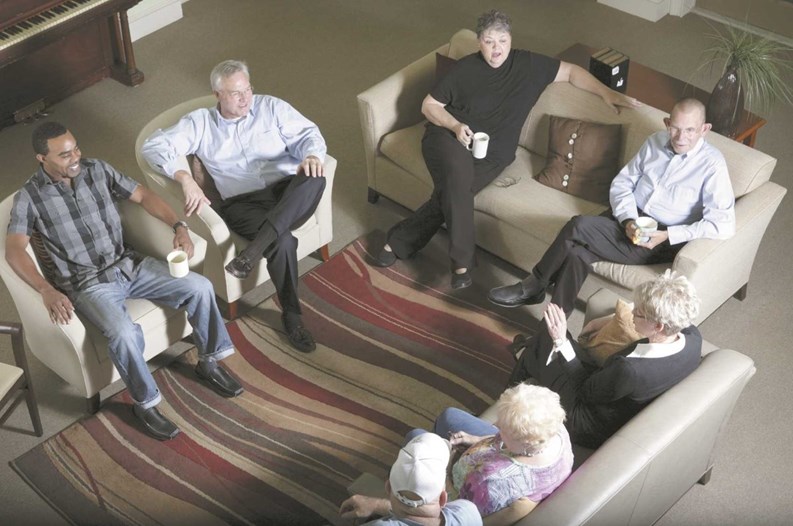In a sprawling urban or suburban environment, people can feel isolated, even though they live close to each other. While high-rise residential buildings and suburban subdivisions put many families near one another, living close doesn’t in itself turn a group of people into a community. Sometimes, it has the opposite effect. People are busy and schedules are hectic, and many don’t want to attend an HOA board meeting or socialize with their neighbors during their downtime.
But attracting committed board members and building a sense of community is smart, because it improves the quality of life within the building and saves money on building expenditures. And there are many ways that co-ops and condos can work to foster a stronger sense of community among their residents, while also attracting new board members.
Making Connections
In the city and even the suburbs, people are busy and used to being on their guard, and aren't always eager to interact with strangers. Others simply prefer not to socialize. In some multifamily communities a significant percentage of the residents are renters, who may not be as fully invested in the community. Some are newly arrived shareholders still stuck in a renter’s mentality, and don't immediately see the value in forging connections with their neighbors.
Apathy is a large factor in the lack of community involvement in some co-op and/or condo communities, says Angela Falzone, property consultant for Chicago-based Association Advocates, Inc.
“People move into multifamily communities to have things done for them, and don't want to be involved, otherwise they would have bought a house. Realtors don't give them the right information, buyers are told ‘everything’ will be done for you, and they have no clue on the involvement that will be necessary,” Falzone says. Many condo owners are frustrated to learn about the level of involvement they might need to invest in the community, especially in smaller properties, she says.
Because some of these communities are advertised as “maintenance-free living,” people take that to mean free of the concerns that go with owning a residence, says Jim Nolan, a board member of Mill Orchard Condominiums in Naperville. “You can sit back and complain or get involved,” he says, but he likes to be involved. He’s been on the board for three years, and president of it for two years.
Nolan says the majority of residents attending the community’s board meetings are retirees. Industry experts say there often is a greater amount of resident participation in communities comprised mostly of retirees, since retired people have more extra time than working people. In Mill Orchards Condominiums, about 50 to 60 percent of the owners attend the board’s annual meeting. Many communities are not as teeming with interested residents.
“A lot of people in multi-unit residential dwellings view the association as another level of government that is not their responsibility,” says James Bouse, president of property management firm Jones & Jones, Inc., in Lisle. “It’s very difficult to get people to volunteer for boards.”
But while every association has a small percentage of people who are willing to volunteer, by not getting involved, most residents are missing an opportunity to make friends and to help the community to operate more efficiently. Enhanced security, less work put only on board members, and improved property values and quality of maintenance are just some of the benefits of neighbors being more involved in their community. With buildings that have few people involved in managing the property, sometimes neighbors are ignoring obvious things that shouldn’t be overlooked.
“People are walking the hallways with blinders on and don’t call in anything, but it helps their neighbors for them to be vigilant,” Bouse says.
There are some drawbacks of not fostering a sense of community in a building. Animosity can build over misunderstandings between residents who are largely strangers to each other, apathy can spread and take away motivation from residents, which can lead to non-compliance of rules, and perhaps worst of all, disregard for maintenance. When apathy grows to a point where it leads people to overlook maintenance issues, costly problems could be around the corner. Residents’ failure to pay attention to seemingly small things in the community could lead to all of the neighbors paying more in higher maintenance fees, such as when a broken machine deteriorates further while it is left unattended and inoperable.
Things as simple as a washing machine breaking and being neglected, with nobody calling it in, could lead to the machine sitting there for two weeks with water in it, Bouse says. “For two weeks, that machine’s bringing in no revenues for the community,” he says.
Creating Ties
Though many working people are very busy and many feel too pressed for time to worry about small inconveniences like broken washing machines, a community where most of the people are disconnected from each other is costlier than needed. It doesn’t have to stay that way, and can be improved through a keener sense of community instilled in residents. Some new arrivals to the building might need a bit of acclimation to the place’s particular style. For some places, that begins with orientation.
Many communities require that a new owner, prior to closing, meet with the board or a representative of the board. At that meeting, the board goes over a checklist with the new owner regarding moving in and rules for the garage, laundry room, etc. The new owner also is given a copy of the co-op or condo’s rules and invited to attend board meetings or volunteer with one of its committees. Such orientations can be more informal or warmer, depending upon the style of a community, but however they are done they may be helpful in dispelling some misconceptions carried by those about to buy into the community.
In some multifamily buildings, creating bonds between neighbors could be as simple as throwing a barbecue around the swimming pool. Or it might be a shared mass tulip bulb planting, spearheaded by the landscaping committee and assisted by the landscaper. Board members also can cultivate closer ties between residents by communicating effectively through newsletters, community websites, or laid back get-togethers for the entire building.
“Even when it’s a social event, it can be hard to get people to participate. Associations can’t use community funds for parties,” Bouse says, noting that people need to participate for the event to succeed. “In my association, we have a potluck get-together once or twice a year.”
It’s possible to avoid misinformation, or lack of communication among neighbors. Effective communication is probably the best tool for creating closer ties among residents, Falzone says. Having open board meetings and not fostering an "us/them" atmosphere between the board and residents can be very beneficial, because it can work to avoid misunderstandings and give a feeling of transparency regarding the board’s work.
Association Advocates, Inc. sends out clearly written agendas detailing what will be discussed at open board meetings. The company also distributes meeting minutes so owners know what was decided during meetings. Mill Orchards Condominiums officials print a newsletter once a month, which is hand-delivered by the board secretary to each unit. The newsletter includes briefs on new owners coming into the community, illnesses of residents, and milestones, such as anniversaries. Community expenditures always are noted in newsletters.
“In writing, we publicize the heck out of any major maintenance, so there are no surprises,” Nolan says.
Jones & Jones, Inc. encourages residents in the communities it serves to publish a weekly or monthly newsletter. Constant, monthly communication, or as often as possible, is the best way to get people involved, Bouse says. “Typically, the newsletters are written by a board member or volunteer. My managers don’t always know who just had a baby, or who fell in the parking lot and hurt themselves,” he says.
Some management companies organize events to build community spirit, such as holiday parties, or summer maintenance days during which residents work together to plant flowers or clean out the garage. And some associations combine the annual meeting and accompanying board election with refreshments, to attract owners to attend and build community spirit. Mill Orchards has a holiday luncheon during the winter holidays, which is strictly volunteer-driven. Association funds aren’t used for the party, which residents fully fund. Occasionally, the community has cocktail parties.
Part of encouraging people to participate in the community begins with the right attitude of the board members. People who volunteer for boards are sometimes part of a small cadre of residents, who regularly volunteer. That would be fine if some of these volunteers weren’t so standoffish. Some boards are sticklers for rules and issue lots of violations to residents, which might be a disincentive to participating.
“The owner who is issued the violation can have a hearing, and the board can review it, but the damage is already done. It alienates people,” Bouse says. “Use discretion and treat people the way you want to be treated. You’ve never had a TV on too loud, or a party spill out onto the balcony late? How much did it disrupt your life? No harm, no foul.”
Remember, though, creating a tighter-knit community isn't all about picnics, games and town hall meetings. Fostering greater involvement often means getting neighbors to take a hands-on approach to managing the community. It might take some creativity on the part of the association but the outcome is well worth the effort.
Jonathan Barnes is a freelance writer and a regular contributor to The Chicagoland Cooperator.







Leave a Comment